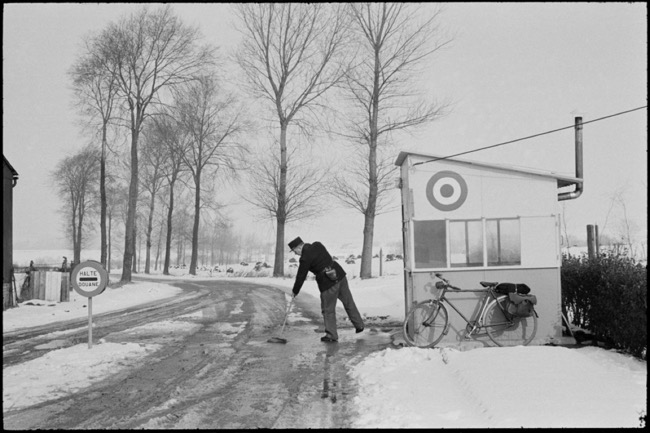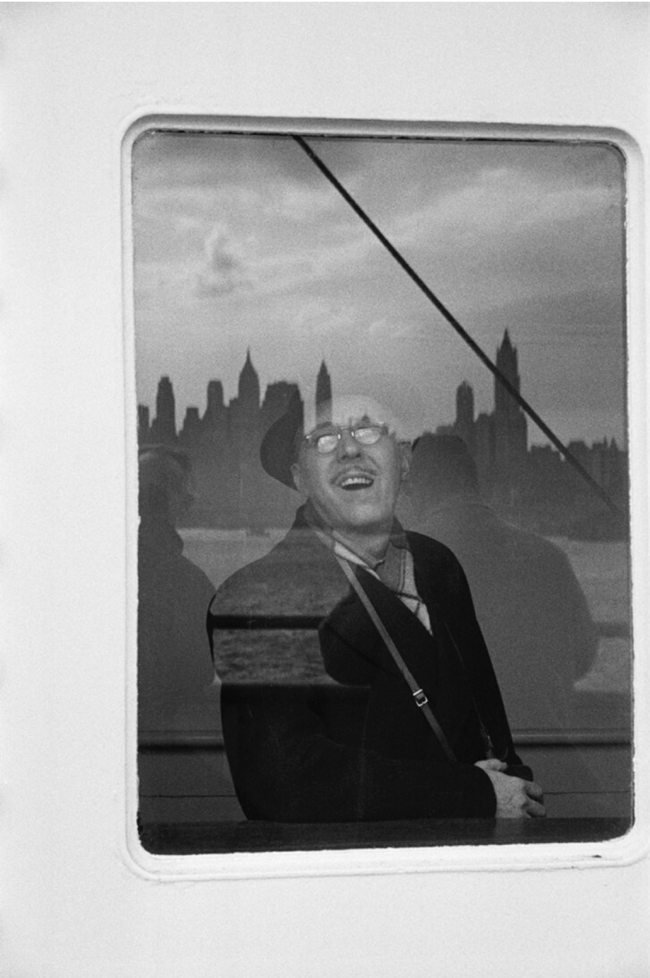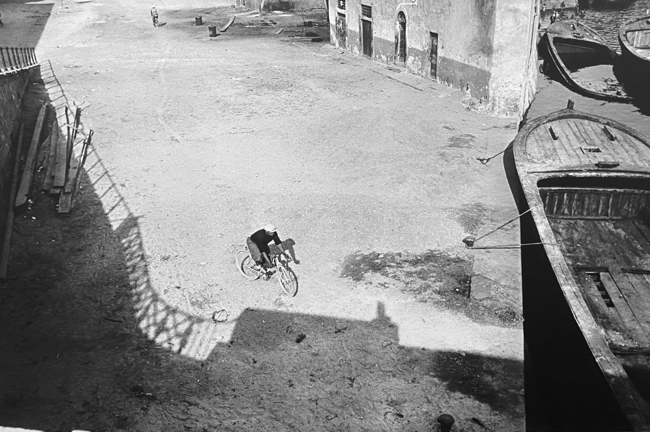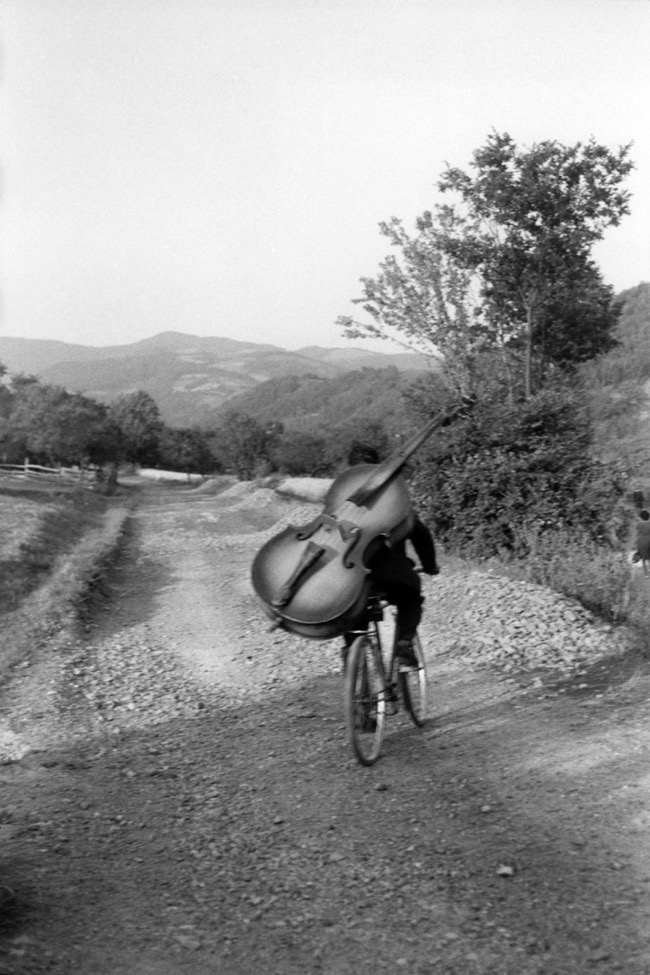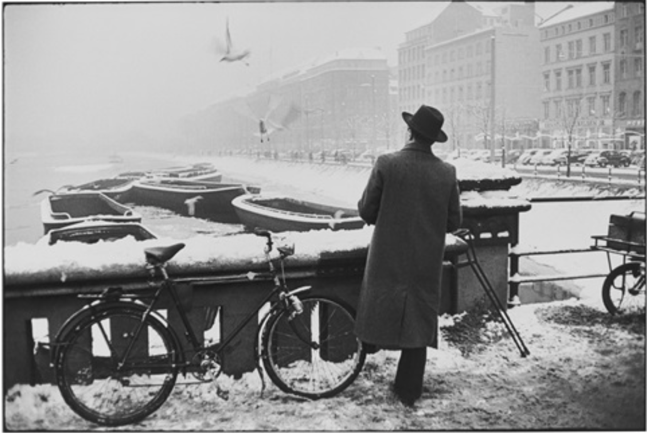Henri Cartier-Bresson experienced the landscape like no other: like a painter. From his position as a spectator, slowly getting filled with the general view at first, then discerning geometric lines and patterns, experiencing it, mentally drawing the lines, composing his tableau, carefully weighing in the patches of light and shadows, the different colours offered, transforming them into shades of grey with various intensities, and then at some moment giving the order to his finger to push the trigger, snapping the picture… HCB expressed his experience as follows “to photograph is to hold one’s breath when all our faculties converge to capture the fleeting reality; it is then that the capture of an image is a great physical and intellectual joy”. I feel the same physical and intellectual joy looking at his images, again and again. I am charmed by his compositions, modestly perfect, with the characters exactly where they should be, with some subtle humour at times, like this one-legged man in Hamburg, not perceived at once, or the customs officer of Bailleul, sweeping in front of his shelter, on a cold winter morning. The Fondation shows a series of images selected by Cartier-Bresson before his death, for an exhibition in Japan in 1999. Some are well know, some less. We also see when more than one shot was made of a particular situation and why a given image was selected. Throughout the years, the fondation is expanding. Expanding its approach to Henri Cartier-Bresson’s oeuvre (I would love to see his never shown before pictures one day!) but also its exhibition space with an additional 30% surface area. Something to rejoice in advance.
